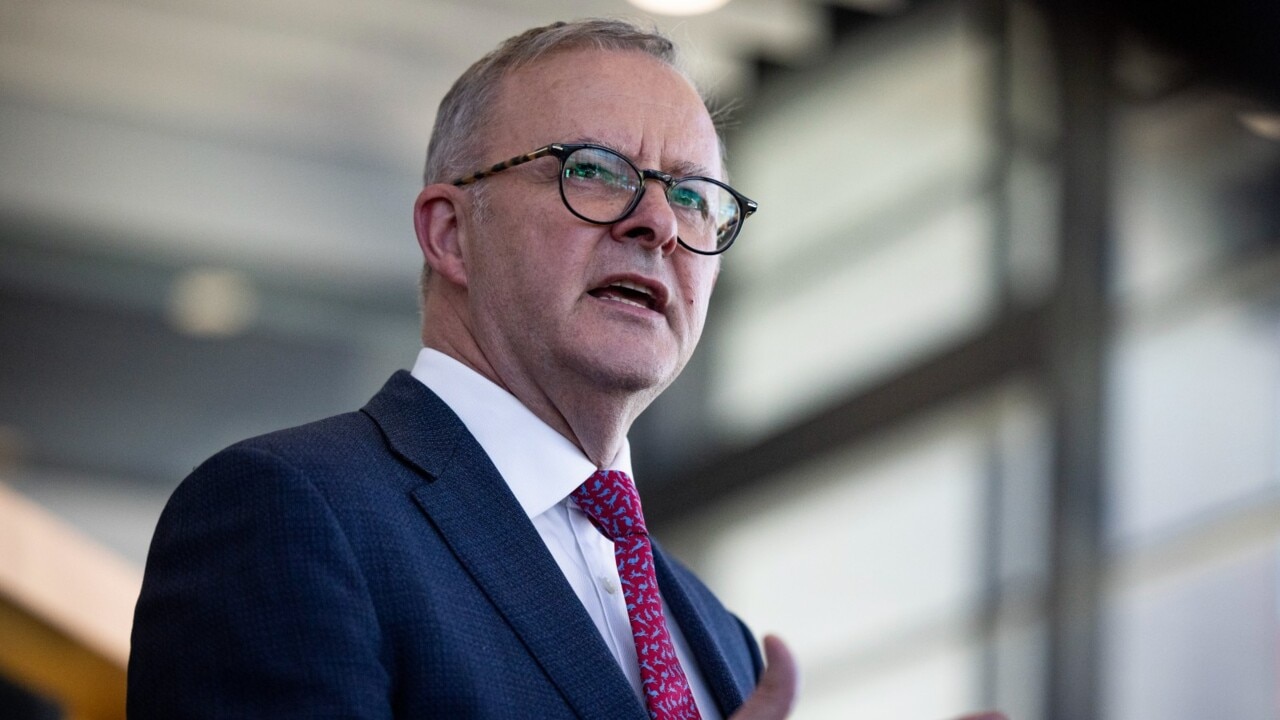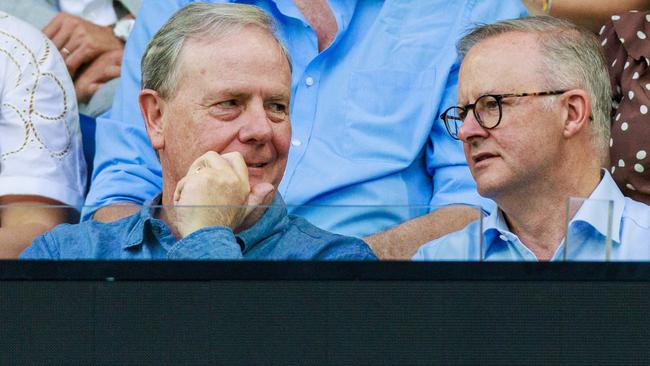
A simple question, Prime Minister: How much will this net-zero miracle cost us? The policy Labor took to the election said the cost of achieving Labor’s 2030 target was $75.8bn, $21bn of which would come from the government.
Last month, the ABC’s David Speers asked Energy Minister Chris Bowen what it would cost by 2050. Bowen said the best guide came from the Australian Energy Market Operator’s Integrated Systems Plan, which estimates the cost of new generation, storage and transmission would be $121bn (in 2024 money) by 2050.
On Wednesday, Treasurer Jim Chalmers had a stab at answering the question on these pages. He cited the Australian Industry Energy Transitions Initiative estimate of $225bn by 2050 for the whole box and dice: energy, hydrogen, metals and chemicals. Curiously, a Labor government that is quick to attach scary figures to nuclear power seems to neither know nor care what the cost of its plan will be or where that money will come from.

Will the cost be counted in hundreds of billions of dollars, as outgoing Net Zero Economy Authority boss Greg Combet told us at the National Press Club? Or will it be in the trillions?
There was scant mention of cost in Anthony Albanese’s speech announcing the Future Made in Australia Act at the Queensland Press Club. And it was less than reassuring that he compared it to Joe Biden’s Inflation Reduction Act, $1 trillion of promised spending that triggered a subsidy arms race for clean energy worldwide.
While the PM talked up his legislation as a vehicle for economic reform, it will be anything but. It is a vehicle for subsidising private sector investment, shifting the risk from corporations to taxpayers, and using regulation to coerce businesses and individuals into getting on board with the government’s green agenda.
While the PM did not dodge the funding challenge completely, his remarks on the topic were ominous. The government will raise money by “maximising the strategic value of our government investment funds”. That likely means raiding the $206bn Future Fund, the Howard government’s provision for the ballooning liability in public service pensions. Investing this money in speculative schemes such as green hydrogen, or green anything for that matter, would be a foolish mistake. As retiring Future Fund chairman Peter Costello pointed out last year, Albanese also foreshadowed raising money by “maximising the value … of our national superannuation system”.

Yet there is no value at all in the superannuation system as such. The value lies in the individual savings accounts of Australian workers. If people want to invest their superannuation in the green economy, they can do so through the many clean-energy funds in the market. Wisely, however, few choose to do so.
Chris Leithner crunched the numbers in his informative blog last week. An investment of $100 in the S&P 500 in 2006 would be worth $401 today, a compound annual growth rate of 9.4 per cent per year for 16 years. In sharp contrast, the value of the S&P Global Clean Energy Index has crashed more than 30 per cent; $100 invested in the GCEI in 2008 would be worth just $39 today, a CAGR of -5.9 per cent per year.
Leithner is sceptical about the whole net-zero exercise. “For consumers, green energy generates intermittent and unreliable power,” he writes. “For investors it’s produced almost continuous red ink.” That is why most of us would prefer to leave investment decisions to trusted financial advisers rather than the government. Albanese talks about investing in a green economy as a “transformative opportunity”.
“Our government will not be an observer or a spectator – we will be a participant, a partner, an investor and an enabler,” he said. If this were true, however, there would be no need for government sweeteners at all. The truth is private investors are getting cold feet.

In summary, the Future Made in Australia Act is a train wreck in the making. It relies on the assumption government is better at allocating scarce capital than the markets. No empirical evidence has been sought to show the government’s policy aims are desirable or even possible. No effort has been made to gauge the unintended consequences, of which experience tells us there will be many.
Former Productivity Commission chief Gary Banks’s dismay at the shambolic and secretive nature of policy formation under this government, reported in The Australian on Thursday, was, if anything, restrained. “Secrecy prevails to the point where any stakeholder lucky enough to be briefed about the government’s plans must sign a nondisclosure agreement,” Banks told a conference in Fremantle on Wednesday. He lamented that advice from public servants was often provisional and not written down so it could be “adjusted to meet the wishes of a minister”.

Albanese responded touchily on Thursday. He said Banks needed to understand the policy in full, and appreciate its objectives. “The world’s round, not flat, that’s why he’s wrong,” he said.
The PM’s ad hominem attack on one of the country’s most respected public policy thinkers offers little hope that the Future Made in Australia Act might one day be seen as anything other than legislation with a slogan. But then it has become the custom for first-term Labor leaders to campaign as economic rationalists and go economically barmy in government. The pretext for the shift is some real or concocted crisis that only the government can fix.
For Kevin Rudd, it was the global financial crisis; primarily limited to the North Atlantic. Nonetheless, Rudd seized the opportunity to dip his nib in the well of pomposity to write: “Not for the first time in history, the international challenge for social democrats is to save capitalism from itself.” The crisis that triggered Albanese’s socialist moment has not been fully explained. Yet he assures us it is as significant as the Industrial Revolution.
We are asked to believe a second, underwhelming Labor prime minister in 16 years has found himself in power at a pivotal moment in history. We are being told that for the second time in less than two decades we have to rethink our attachment to free-market economics and return to the kind of centrally planned economy that failed so spectacularly in the 20th century.
What could go wrong?
Nick Cater is a senior fellow at the Menzies Research Centre.






